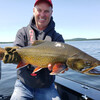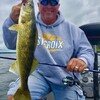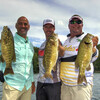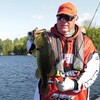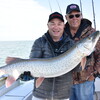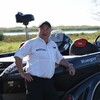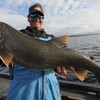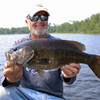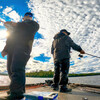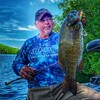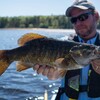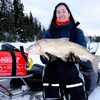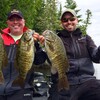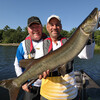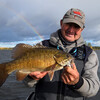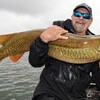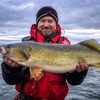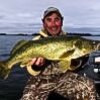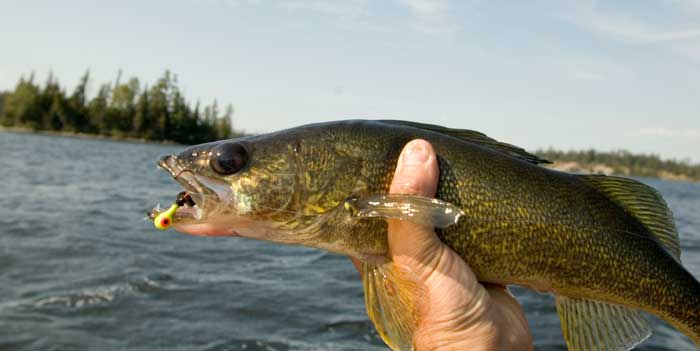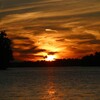
Cash in on Early Season Walleyes
There are few dates on the fishing calendar more eagerly anticipated than the opening day of the walleye season in Ontario. It is timed to begin the first Saturday of May in the southern part of the province, the second Saturday in the middle portion and the third Saturday in the sprawling north country. The dates are set to protect the fish when they’re spawning.
A well-known fact about the joyful spring season opener is that the walleyes stick around and linger near the areas where they just finished laying their eggs. And because they return to the same nurseries year after year the locations are often well known. So, along with the walleyes you’ll usually find plenty of walleye anglers.
But, it doesn’t have to be the case, because there are plenty of overlooked spring fishing locations where the walleyes are bunched up and concentrated after spawning. Where you can fish and never see another boat. The trick is zeroing in on smaller, isolated, secluded spring fishing areas. Think about it: would you rather fish a spot holding 1000 post-spawn walleyes with 50 other boats, or a location harbouring 200 fish you can enjoy all to yourself? I know which one I’d pick.
This was one of the subjects we discussed recently on our Doc Talks Fishing podcast with fisheries scientist, Nick Baccante who worked for many years as the lead Research Biologist in the Ontario Ministry of Natural Resources (OMNR) Walleye Research Unit in Thunder Bay. When I asked the walleye guru what makes a great spring spawning location and thus a wonderful opening-day fishing spot, he said at the top of the list is: oxygenated water.
“If we think about oxygen in the water as a key factor,” Baccante explained, “then you look for (inflowing) creeks and rivers. But they’re only preferred if they have moving water — rapids and ripples — because that's what oxygenates the water.”
But what if you’re fishing one of the thousands of walleye lakes scattered across the province, that lacks an inflowing creek, stream or river? What then? Well, Baccante says we need to ask ourselves where the fish might find the oxygenated water they urgently require to aerate their eggs. And it is on the windward side of the lake. So, if we look at where the prevailing winds are coming from in most Ontario walleye waters, they’re typically blowing from the west. So the eastern shorelines of the lakes — or the eastern sides of islands — are where the walleyes are going to receive the greatest amount of wave action.
As Baccante explained in the podcast, he recently wanted to show some folks what it looked like to observe walleyes spawning at night, when they typically lay their eggs, so he took them to a nearby body of water that is 15 kilometres long. “It's a big lake,” he notes, “And I said to them, let's start on the eastern side where there are rocks and clean substrate. And sure enough — the first spot — as soon as we get there, we find walleyes spawning right up close to shore, because the prevailing winds at that time of the year come from the west. It stirs up the water and there's clean substrate, with all those nice spaces in between the rocks where the eggs can fall and be protected. So if you were to go to a lake and had no idea where to look, that would be the first thing that I would do.”
Of course, you can narrow down those windblown shorelines even further and find the perfect ones for walleyes, by looking just above the water line and finding where there is a blend of small baseball, basketball and soccer ball-size rocks. Usually, what you see along shore mirrors what is just out in front, under the water. Nevertheless, I still like to scan the knee-deep shoreline with my Humminbird side imaging unit. And on the most ideal-looking spots, I will lower down the Aqua-Vu underwater camera to confirm that rocks and boulders are inviting the walleyes to come in and spawn. Oh, yes, and to stick around afterwards, to help me welcome in another wonderful Ontario walleye season opener.
Recommended Articles
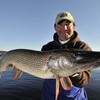
Planning for Pike
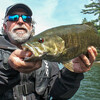
Lake Lauzon with Fish'n Canada
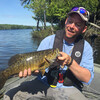
Fly Fishing for Smallmouth Bass Year Round
5 Keys To Canadian Muskies
Big Water, Big Fish
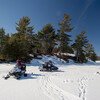
Sun Trout and Ice
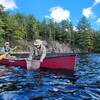
Fishing the Exceptional Waters at Blue Fox Camp
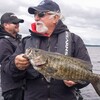
Smallmouth Fishing After a Northern Ontario Cold Front
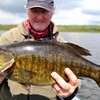
Catching More Smallmouth Bass
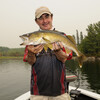
Shield Lakes & Rivers

5 Flies for Ontario’s Most Popular Species
Top 5 Wet flies for Brook Trout
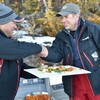
Gourmet Dining
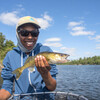
Girls Getaway
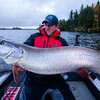
Casting and Blasting at Temple Bay Lodge
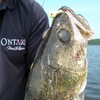
Spring Walleye
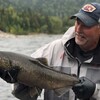
Salmon Fishing
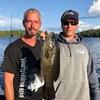
Green Wilderness Lodge
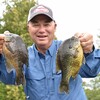
Fishing Big Rideau Lake
